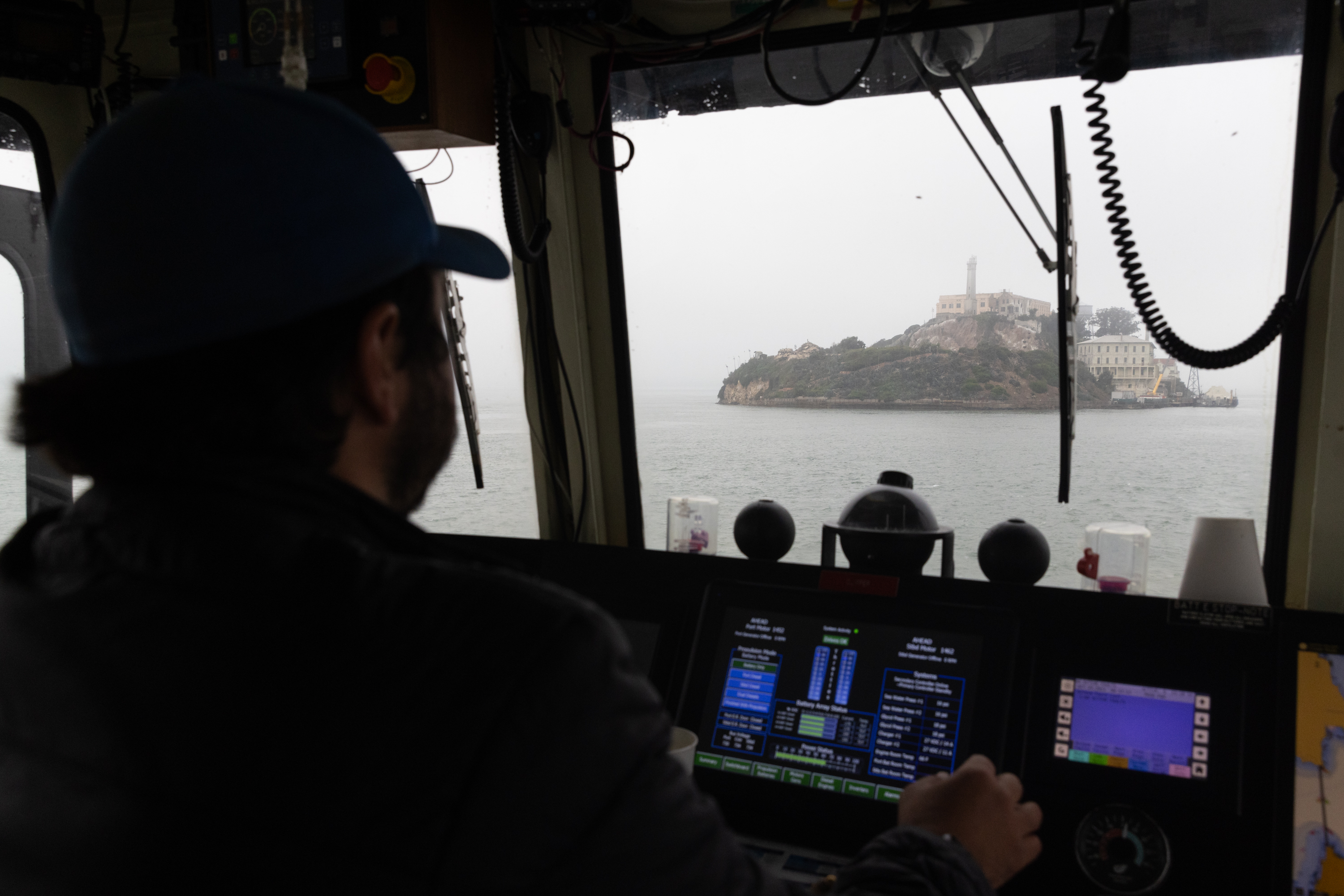More than 100 books, a dozen major motion pictures and numerous TV shows have been made about Alcatraz. As the island celebrates 50 years as a tourist destination Thursday, what’s left to say?
It turns out there’s always something new to learn about the Rock, because Alcatraz has so many layers of history: military base, federal prison, site of Native resistance, bird sanctuary. The 22-acre island in the San Francisco Bay continues to generate speculation and ink, creativity and reflection. Two special guests who know the island intimately were on hand this week for a press tour celebrating half a century of public tours.
“People can’t get enough of Alcatraz,” said John Cantwell, a park ranger who retired two years ago after more than three decades of service on the Rock. He likes to joke that his time on the island beats the record set by Alvin “Creepy” Karpis, a 1930s-era gangster who became the longest-serving prisoner on Alcatraz after spending 26 years locked up on the island.
TripAdvisor has consistently rated the site of the long-defunct prison as the country’s No. 1 landmark, and post-pandemic, Cantwell said tours are once again selling out nearly a month in advance. In 2022, 1.3 million visitors took the 14-minute ferry ride to the island. Alcatraz officially became a national park when it was incorporated into the Golden Gate National Recreation Area in 1972, a year before it opened to the public.
The enduring interest in one of America’s most notorious prisons isn’t hard to understand—a continuous stream of books and movies hasn’t let people forget about famous inmates like Al Capone or escapees like Frank Morris, who departed the island with two accomplices on a makeshift raft in the dead of night in June 1962.
Yet while the island’s chapter as a federal penitentiary might get the most airtime, it was the U.S. military that was the island’s longest continuous occupant, at 80 years. (While Native Americans likely visited Alcatraz for food, there is no evidence they lived there before they occupied the island from 1969 to 1971, Cantwell said.)
Originally a rock in the bay with two humps, the island’s sandstone peaks were flattened by the military to build a cannon-filled fort to help guard San Francisco during the Civil War. Even in those early days, the island was a prison, housing soldiers awaiting military discipline as well as captured Native Americans from the Hopi, Apache and Modoc tribes.
But the most well-known prisoners came later, after Alcatraz reopened as a federal penitentiary in 1934. When the cellblock’s construction was completed in 1912 with 600 cells, it was the world’s largest reinforced concrete structure.
Despite its reputation, the island isn’t remembered by everyone as a foreboding place. Jolene Babyak, who lived on Alcatraz as a child when her father was associate warden, remembered a rich social life on the Rock: watermelon feeds along the dock, parties for the officers’ wives in which they wore lampshades on their heads and—the annual highlight of the Alcatraz social calendar—the Western Party. Guests planned their outfits months in advance.
“Everyone felt isolated here to some extent,” Babyak said. “So people had to entertain themselves.”
Yet Babyak stressed that she did not feel deprived of a normal childhood. She attended school in San Francisco and invited friends to the island to play. She cherishes the fun, unique experience she had living on Alcatraz with dozens of other children of staff members. She even scored her first kiss on the island—her boyfriend lived on the Rock, too.
“It was a wonderful place to grow up,” she said, “a low-crime neighborhood.”
Babyak wants to settle any misconception that she felt endangered living alongside infamous prisoners.
She was on Alcatraz during that famed 1962 escape—which she confessed was more thrilling than scary. She remembers being awakened in the middle of the night by a siren. Her mother told her to get dressed and help search the house in case prisoners were hiding there.
“I was late for school,” Babyak said. “But I had a fabulous excuse.”
